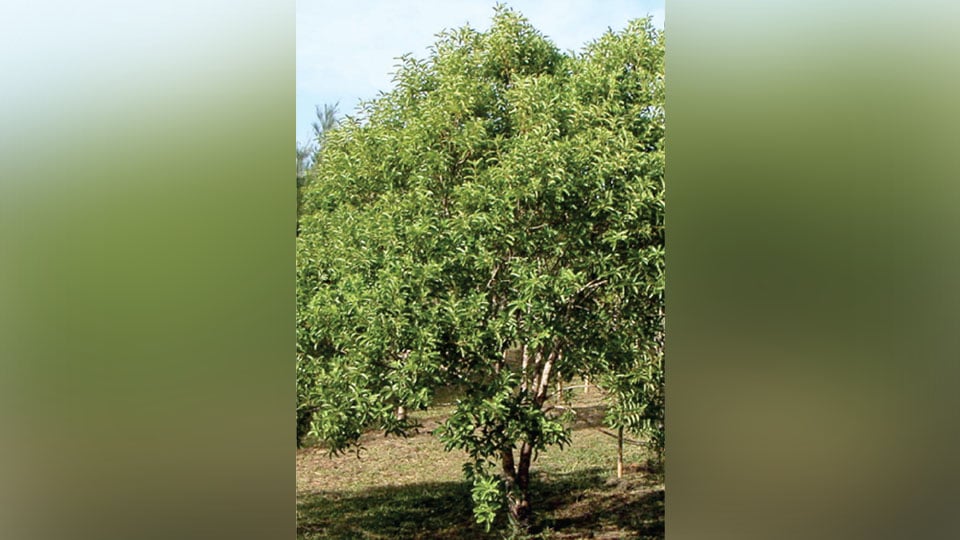By M.T. Yogesh Kumar
In its efforts to support debt-ridden farmers who are tormented by vagaries of weather year-on-year, the Karnataka Forest Department has come up with a plan encouraging farmers to grow sandalwood trees. At the same time, the Department wants to enable the State to regain its distinction as “Srigandada Nadu” (Land of Sandalwood).
As per the plans, farmers can take saplings from the designated Forest Department nurseries and plant them in their agricultural fields and other properties. Once fully grow, they can sell it without fear of prosecution as the State Government has relaxed norms pertaining to the sale of sandalwood trees on private property.
2008 NOTIFICATION
Though the State Government issued a notification on July 11, 2008 that gives ownership and selling rights to private owners and institutions, farmers and other growers refrained from cultivating sandalwood trees on a large scale for the fear of prosecution and the threat from sandalwood smugglers.
Lifting the restrictions, the authorities felt that if sandalwood cultivation was encouraged, the institutions which primarily depend on sandalwood for running their enterprises — the Karnataka Soaps and Detergents Limited and the Karnataka Handicrafts Development Corporation — will have a continuous supply of sandalwood. The authorities also took note of the declining sandalwood reserves in the State forests.
FEAR OF PROSECUTION
Before the notification came into force, the Government was the sole owner of sandalwood trees in private properties and the Forest Department was booking cases under the Forest Act 1927 against people cutting these trees. So much so that if any farmer found a sandalwood sapling inside his property he would cut it for the fear of prosecution and smugglers.
Now the ownership rights have been given to those having trees in their property. However, they cannot cut the trees on their own or use it for personal purposes. They should fulfil certain procedures for selling the tree only to the Government agencies.
The sandalwood tree (Santalaum Album) is perhaps the planet’s most expensive wood, because of its cosmetic and therapeutic value. There is huge international demand for it with its fragrant heartwood priced at over Rs. 10,000 a kilo.
As per Section 108 of the Karnataka Forest (Amendment) Act 2001, sandalwood tree grown in a specific land is the property of the owner of the land. Hence, anybody can grow sandalwood without any apprehensions.
‘TRICHANDANAVANA’ SCHEME
Speaking to Star of Mysore, Mysuru Deputy Conservator of Forests Dr. V. Karikalan said that though the restrictions on sandalwood cultivation were lifted way back in 2008, there was not much awareness. “We have come up with the plan called ‘Trichandanavana’ where growers can obtain sandalwood saplings for Rs. 5 per plant after showing the ‘Pahani’ or RTC records. Fully grown trees can be cut by farmers after informing the Forest Department and pieces can be sold to the Department or the Karnataka Soaps and Detergents Limited,” he said.
The Range Forest Officer, under whose jurisdiction the tree is located, has the responsibility of issuing selling permit and transit pass to move the tree from one place to another. The RFO will have to get necessary clearance from the jurisdiction Deputy Conservator of Forests.
GOOD RESPONSE
The Department plans have got good response from farmers from Mysuru and Chamarajanagar and they have taken thousands of saplings. “Districts of Mysuru, Chamarajanagar, Kodagu and parts of Sathyamangala in Tamil Nadu are an ideal place to cultivate sandalwood and it is the ‘Sandalwood Belt’ of Karnataka. The Karnataka Soaps and Detergents Limited has cultivated sandalwood in 10 hectares of land in Mysuru and the Forest Department too has plantations that extends hundreds of acres in and around Yelwal,” he added.
Growing these trees is quite easy. It requires good sunlight and tends to grow vertically, rather than in girth and reaches around 30 feet in height and 7 to 12 inches in diameter. It thus grows well in smaller spaces too. The tree starts flowering after around seven years, and the tree trunk develops fragrant heartwood after 10 years.








i need sandlewood plants to plant in my field. let me know where is the plants are available?
I want to sell my sendalwood tree its age are 12 year and 13-15 inch diameter.